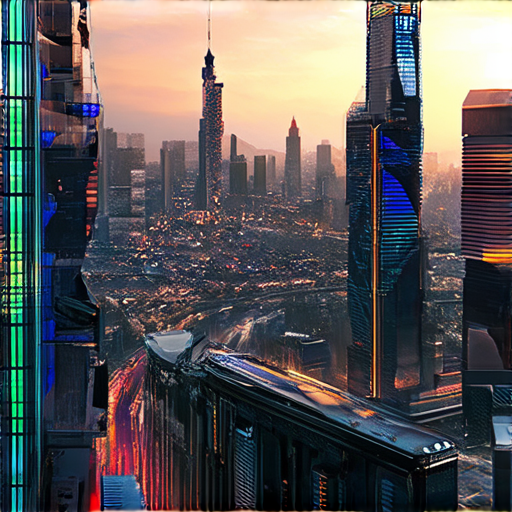When it comes to creating a successful online presence, one crucial aspect often gets overlooked – ui web design. This critical component plays a vital role in shaping the user experience, making or breaking the success of a website. In today’s digital landscape, where competition is fierce and user expectations are high, understanding the intricacies of ui web design has become essential for businesses looking to stay ahead of the curve.

What is UI Web Design?
User interface (UI) web design refers to the process of creating visual representations of digital products, focusing on how users interact with them.
- Appearance: UI designers consider the layout, color scheme, typography, and imagery to create an aesthetically pleasing experience.
- Interactivity: They design intuitive interfaces that respond to user input, making navigation and interaction seamless.
- Usability: UI designers aim to create interfaces that are easy to use, reducing cognitive load and minimizing errors.
- Behavior: They define how the interface behaves under various conditions, such as loading animations and error messages.
- Feel: UI designers strive to evoke emotions and create a sense of engagement through subtle design cues and micro-interactions.
Key Principles of UI Web Design:
- Consistency: Establishing a consistent visual language and behavior throughout the interface.
- Clarity: Ensuring that the interface is easy to understand and navigate.
- Feedback: Providing timely and relevant feedback to users, indicating the outcome of their actions.
- Error Prevention and Recovery: Anticipating and mitigating potential errors, and providing clear recovery options.
- Flexibility and Efficiency: Accommodating diverse user needs and abilities, and streamlining interactions.
Tips for Effective UI Web Design:
- Keep it Simple: Avoid clutter and unnecessary complexity.
- Use Visual Hierarchy: Organize elements to guide the user’s attention.
- Test and Iterate: Conduct usability testing and gather feedback to inform design decisions.
- Stay Up-to-Date: Familiarize yourself with the latest design trends and technologies.
Best Practices for UI Web Design:
- Accessibility: Ensure that the interface is accessible to users with disabilities.
- Responsiveness: Design interfaces that adapt to various screen sizes and devices.
- Performance: Optimize the interface for fast loading times and smooth interactions.
- Security: Implement robust security measures to protect user data.
UI vs UX in Web Design
As a web designer, understanding the difference between User Interface (UI) and User Experience (UX) design is crucial for creating effective and engaging digital products.
- UX Design: UX design focuses on the overall experience a user has when interacting with a website or application. It involves conducting user research, defining information architecture, creating wireframes, and usability testing to ensure that the product meets the user’s needs and goals.
- UI Design: UI design, on the other hand, focuses on the visual and interactive aspects of a product. It involves designing the layout, functionality, and visual elements such as color, icons, and typography of each screen.
The Key Differences
- User-Centered Approach:** UX design takes a user-centered approach, focusing on understanding the user’s behavior, motivations, and pain points to create a seamless experience.
- Visual Aspects:** UI design focuses on the visual aspects of a product, including typography, color schemes, and iconography.
- Interactivity:** UI design also involves designing the interactive elements of a product, such as buttons, forms, and navigation menus.
The Importance of Both
A well-designed UI can enhance the user experience, making it easier and more enjoyable for users to interact with a product. Conversely, a poorly designed UI can hinder the user experience, leading to frustration and abandonment.
Best Practices
- Conduct User Research:** Conduct thorough user research to understand the target audience’s needs, preferences, and behaviors.
- Create Wireframes and Prototypes:** Create wireframes and prototypes to visualize the product’s layout and functionality.
- Test and Iterate:** Test the product with real users and iterate based on feedback to ensure a seamless user experience.
Conclusion
In conclusion, UI and UX design are two interconnected disciplines that work together to create effective and engaging digital products. By understanding the differences between UI and UX design, designers can create products that meet the user’s needs and goals, resulting in a better user experience and increased engagement.
At 119webdesign.com, we believe that a well-designed UI and UX are essential for creating successful digital products. Our team of experts can help you create a seamless user experience that drives engagement and conversion.

Is a Web Designer a UI Designer?
As a web designer myself, I often get asked whether web design and UI design are interchangeable terms.
- While there is some overlap between the two disciplines, they are not exactly the same thing.
Differences Between Web Design and UI Design:
- Scope: Web design encompasses the overall visual and functional aspects of a website, including layout, color scheme, typography, and imagery. UI design, on the other hand, focuses specifically on the user interface, which includes buttons, forms, navigation menus, and other interactive elements.
- Skillset: Web designers typically require a broader skillset, including proficiency in coding languages like HTML, CSS, and JavaScript, as well as familiarity with design tools like Sketch, Figma, and Adobe Creative Cloud. UI designers, while still requiring strong design skills, tend to focus more on the interaction design aspect and may work closely with developers to implement their designs.
- Deliverables: Web designers often produce a wider range of deliverables, including wireframes, prototypes, high-fidelity designs, and style guides. UI designers, by contrast, typically focus on creating detailed, interactive designs that can be implemented by developers.
Why the Distinction Matters:
The distinction between web design and UI design matters because it reflects the unique challenges and opportunities of each discipline. By recognizing the differences between these roles, we can better understand how to collaborate effectively and create exceptional digital experiences.
Key Takeaways:
- Web design encompasses the overall visual and functional aspects of a website.
- UI design focuses specifically on the user interface, including interactive elements.
- While there is some overlap between the two disciplines, they require distinct skillsets and deliverables.
By understanding the nuances of web design and UI design, we can create more effective, user-centered digital products that meet the needs of our audiences.

What Does Web UI Do?
A Web User Interface, or Web UI, refers to the visual and interactive elements of a website or web application that allow users to interact with the content or software running on a remote server through a web browser.
- The primary function of a Web UI is to facilitate communication between the user and the web application, enabling users to input data, view information, and perform various actions.
- Web UI typically consists of graphical elements such as buttons, forms, menus, and icons, which work together to provide a seamless user experience.
- A well-designed Web UI should be intuitive, visually appealing, and easy to navigate, allowing users to quickly find the information they need and complete tasks efficiently.
Key Components of Web UI:
- User Interface Design: Refers to the process of creating the visual and interactive aspects of a Web UI, including layout, typography, color schemes, and graphics.
- User Experience (UX): Focuses on designing the overall experience of interacting with a website or web application, taking into account factors such as usability, accessibility, and engagement.
- Front-end Development: Involves building the client-side of a web application, using programming languages like HTML, CSS, and JavaScript to create the visual and interactive elements of the Web UI.
Best Practices for Web UI Design:
- Keep it Simple: Avoid cluttering the Web UI with too many elements or complex features, making it easier for users to focus on the task at hand.
- Use Consistent Design Elements: Establish a consistent visual identity throughout the Web UI, using a limited palette of colors, fonts, and graphics to create a cohesive look and feel.
- Test and Iterate: Conduct thorough testing and gather feedback from users to identify areas for improvement and refine the Web UI accordingly.
Tools and Technologies for Web UI Development:
- HTML/CSS/JavaScript: Essential technologies for building the front-end of a web application, used for creating the visual and interactive elements of the Web UI.
- UI Frameworks and Libraries: Such as Bootstrap, Material-UI, and React, which provide pre-built components and tools for building responsive and customizable Web UIs.
- Design Tools: Like Sketch, Figma, and Adobe XD, which enable designers to create and prototype Web UI designs, collaborate with developers, and iterate on the design process.
What Does a Web UI Developer Do?
A Web UI developer, also known as a User Interface developer, plays a crucial role in creating visually appealing and user-friendly interfaces for websites and applications.
- Designing User Interfaces: As a Web UI developer, I am responsible for designing user interfaces that are intuitive, easy to navigate, and aesthetically pleasing.
- Writing Clean Code: I write clean, efficient, and maintainable code using frontend web development technologies such as HTML, CSS, and JavaScript.
- Collaborating with Cross-Functional Teams: I work closely with designers, product managers, and engineers to understand project requirements and deliver high-quality solutions.
Main Responsibilities:
- Developing responsive and mobile-first designs that cater to various screen sizes and devices.
- Creating interactive components, such as buttons, forms, and navigation menus, using HTML, CSS, and JavaScript.
- Implementing accessibility features to ensure that websites and applications are usable by people with disabilities.
- Optimizing website performance and ensuring seamless user experiences through caching, minification, and compression techniques.
Key Skills:
- Proficiency in HTML, CSS, and JavaScript, including frameworks like React, Angular, and Vue.js.
- Experience with front-end build tools, such as Webpack, Gulp, and Grunt.
- Familiarity with version control systems, like Git, and agile development methodologies.
- Strong understanding of accessibility guidelines and web standards.
Best Practices:
To excel as a Web UI developer, I adhere to best practices, such as:
- Writing modular, reusable, and well-documented code.
- Following accessibility guidelines and web standards.
- Staying up-to-date with the latest front-end technologies and trends.
- Collaborating effectively with cross-functional teams to deliver high-quality solutions.
Resources:
For further learning and inspiration, I recommend checking out the following resources:
- The official documentation for HTML, CSS, and JavaScript.
- Front-end framework documentation, such as React, Angular, and Vue.js.
- Accessibility guidelines and web standards, like the W3C Accessibility Guidelines.
- Online communities, forums, and blogs focused on front-end development.

Creating Web UI: A Comprehensive Guide
To create a stunning web UI, you need to understand the importance of user experience (UX) and user interface (UI). A well-designed web UI can enhance user engagement, increase conversions, and ultimately drive business growth.
-
Design Principles
- Keep it simple and intuitive
- Use consistent typography and color schemes
- Create a visually appealing layout
- Make it responsive and mobile-friendly
-
Key Elements of Web UI Design
- Typography: Choose fonts that are easy to read and scalable
- Color Scheme: Select colors that evoke emotions and convey meaning
- Imagery: Use high-quality images that support your brand identity
- Buttons and CTAs: Make them prominent and easily clickable
-
Best Practices for Web UI Design
- User Research: Conduct surveys and interviews to understand user behavior
- Wireframing and Prototyping: Sketch out ideas and test them with users
- Usability Testing: Gather feedback and iterate on designs
- Cross-Browser Compatibility: Ensure designs work seamlessly across browsers
-
Tools and Resources for Web UI Design
- Sketch and Figma: Popular design tools for wireframing and prototyping
- Adobe XD and Photoshop: Industry-standard software for designing and editing graphics
- Material Design and Bootstrap: Frameworks for building responsive and mobile-friendly layouts
- Canva and Pixlr: User-friendly tools for creating visual content
-
Conclusion
A well-designed web UI is crucial for driving user engagement and business growth. By following these guidelines, principles, and best practices, you can create a stunning web UI that sets your brand apart from the competition.

0 Comments